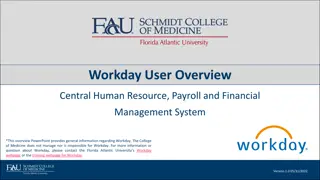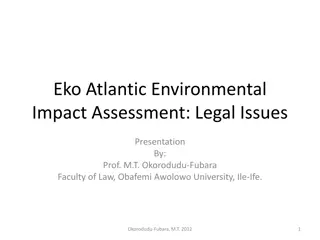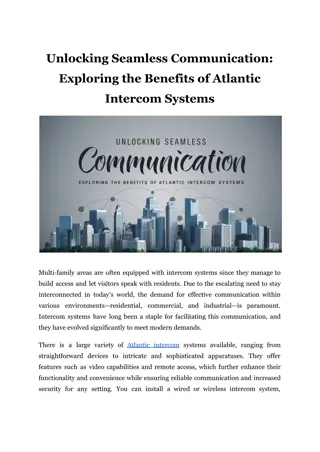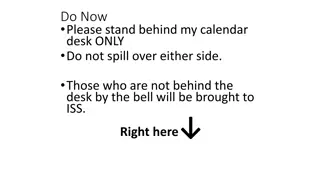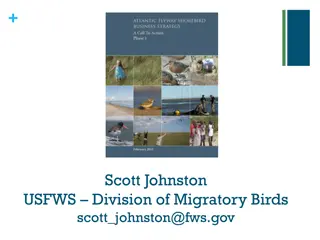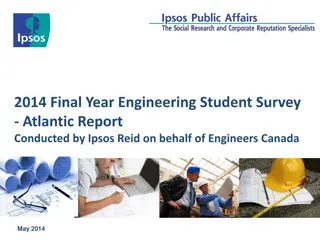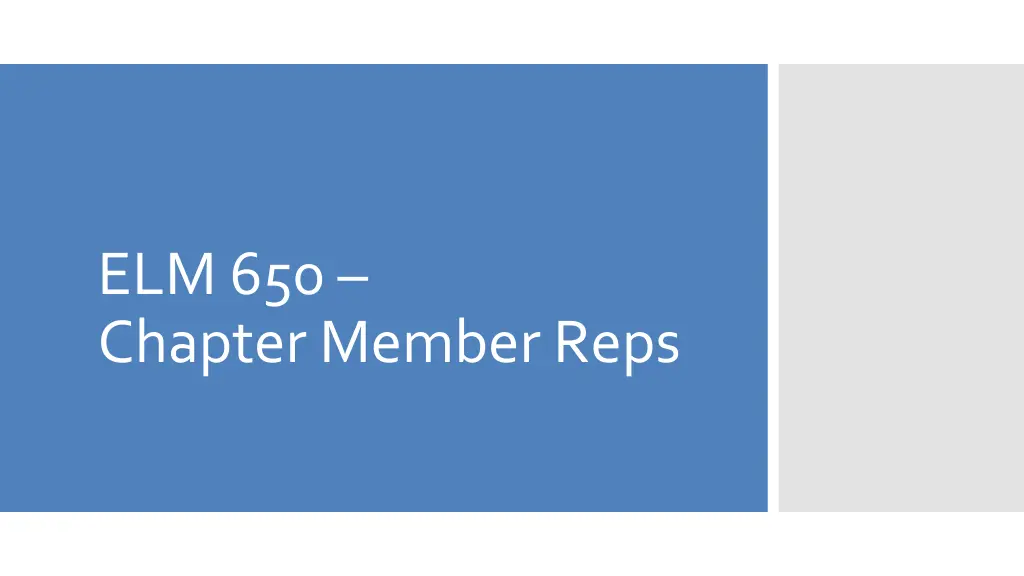
Employee Representation and Corrective Measures in Workplace Policies
Learn about employee representation rights and corrective measures in the workplace, including disciplinary actions, performance management, emergency placements, warning letters, and more. Understand the process for disciplinary actions and the importance of early dialogue and guidance for positive outcomes in the manager-employee relationship.
Download Presentation

Please find below an Image/Link to download the presentation.
The content on the website is provided AS IS for your information and personal use only. It may not be sold, licensed, or shared on other websites without obtaining consent from the author. If you encounter any issues during the download, it is possible that the publisher has removed the file from their server.
You are allowed to download the files provided on this website for personal or commercial use, subject to the condition that they are used lawfully. All files are the property of their respective owners.
The content on the website is provided AS IS for your information and personal use only. It may not be sold, licensed, or shared on other websites without obtaining consent from the author.
E N D
Presentation Transcript
ELM 650 Chapter Member Reps
651.2 Representation Subject to prohibitions regarding Executive and Administrative Schedule (EAS)/Craft representation, employees have free choice of representation. Representatives designated by employees, if postal employees and if otherwise in a duty status, are granted a reasonable amount of official time to respond to notices of proposed disciplinary action, to prepare for and represent the employee at a hearing held in accordance with 652.24, and/or to represent an employee who has appealed a letter of warning or emergency placement in a non duty status in accordance with 652.4. Employees covered under these provisions may request representation during investigative questioning if the employee has a reasonable belief disciplinary action may ensue. REPRESENTATION
651.3 Non Disciplinary Corrective Measures Accountable managers/supervisors are responsible for the direct day to day performance management of subordinates. The accountable manager/supervisor monitors subordinates performance and provides appropriate resources, coaching, and feedback to subordinates. The manager/supervisor is responsible for leading the employee to a higher level of achievement. Performance improvement should be a shared concern and effort between manager and employee. Early dialogue and guidance are critical to achieving positive results and continuance of an effective manager/employee relationship. Managers Responsibility
651.4 Emergency Placement in OffDuty Status An employee may be placed in an off-duty nonpay status immediately, but remains on the rolls when he or she: a. Exhibits characteristics of impairment due to alcohol, drugs, or other intoxicant; b. Fails to observe safety rules; c. Fails to obey a direct order; d. Provides reason to be deemed potentially injurious to self or others; or e. Disrupts day-to-day postal operations in any other way. Emergency Placement Placement in an off duty nonpay status is confirmed in writing, stating the reasons and advising the employee that the action is appealable. The employee should be returned to duty after the cause for nonpay status ceases unless individual circumstances warrant otherwise. Use of these emergency procedures does not preclude disciplinary action based on the same conduct.
651.5 Letters of Warning When warranted by the failure of non disciplinary corrective measures or by the seriousness of the offense, a letter of warning may be issued. Letters of warning are usually issued by the employee s immediate supervisor. The written warning should contain: a. Specific reasons for the letter; and b. A statement of applicable appeal rights. Letters of Warning Letters of warning remain in the employee s official personnel folder (OPF) and/or electronic official personnel folder (eOPF) for a period of two calendar years unless otherwise resolved or cited in subsequent disciplinary action.
651.6 Letters of Warning in Lieu of TimeOff Suspensions 651.61 Policy Letters of warning in lieu of time-off suspensions replace time-off suspensions for non bargaining employees, except when required otherwise by statute. This policy does not preclude management from placing a non bargaining employee in an indefinite nonpay, non duty status when there is reasonable cause to believe the employee has committed a crime for which a sentence of imprisonment may be imposed. LOW in Lieu of 651.62 Implementation Letters of warning in lieu of time off suspensions may be issued in lieu of either 7 day or 14 day time off suspension only. Unless required by statute, suspensions of more than 14 days are prohibited except for indefinite suspensions referenced in 651.7. Letters of warning in lieu of time off suspensions are equivalent to time off suspensions as an element of past discipline and may be cited as such in future disciplinary actions.
651.64 Response The employee and/or his or her representative may respond to the proposed letter of warning in lieu of time-off suspension in writing and/or in person to the deciding official (management at a higher level of authority than the individual who issued the proposed letter of warning in lieu of time-off suspension) within 10 calendar days of receipt. You must include the name and title of the deciding official in your response. Response
651.65 Decision The deciding official, after consideration of the facts of the case and the employee s response, issues a letter of decision after the expiration of the 10 calendar day period for reply, but no later than 30 calendar days following the receipt of the employee s response. The decision letter will advise the employee that he or she may appeal in writing within 15 calendar days of receipt of the letter of decision. Decision
651.66 Retention Letters of warning in lieu of time off suspensions remain in the employee s OPF and/or eOPF for two years unless otherwise resolved or cited in subsequent disciplinary action. Retention
651.7 Adverse Actions 651.71 Definition Adverse actions are defined as discharges, suspensions of more than 14 days, furloughs for 30 days or less, and/or reductions in grade or pay. 651.72 Policy Adverse Actions Adverse action may be taken against an employee: a. Because lesser measures have not resulted in the correction of deficiencies in behavior or performance; b. Because of the gravity of the offense; or c. For non disciplinary reasons, such as the correction of a position misranking.
651.74 Response The employee or representative may respond to the notice of proposed adverse action in writing, in person, or both, to the deciding official or designee identified in the notice. The employee or representative may respond and present evidence, including affidavits, within 10 calendar days from receipt of the notice. The time limits for responding to a proposed adverse action may be extended by the deciding official or designee for reasonable cause. Response
651.76 Duty Status The employee, unless otherwise provided in 651.77, remains in a pay status, either on the job or on administrative leave, at the option of the employer, during the notice period. The notice period must be at least 30 calendar days, unless covered by 651.77. Discharged or indefinitely suspended employees who appeal remain on the rolls in a nonpay, non duty status until the disposition of the case through the chosen appeal procedures. Normally, disposition of the case would be a final decision from the MSPB or a Step I decision in an administrative 650 appeal. In cases where the MSPB has mitigated an adverse action in an initial decision and the Postal Service files an appeal, the employee s status will be handled in accordance with MSPB regulations regarding interim relief. Duty Status
651.75 Decision The deciding official, who must be higher in authority than the proposing official, considers the employee s response and gives a written decision, including reasons for the decision, as soon as possible after the employee s time to respond has expired, but no later than 60 calendar days following the receipt of the employee s response. In field installations, the installation head or designee usually makes the decision. In other offices, the decision is made by a branch manager or above. Normally, the deciding official is the supervisor or manager of the employee s immediate supervisor. The Postal Service may substitute as the deciding official another supervisor or manager. Such a substitution may be made by any of the following: the vice president of Labor Relations; area vice president; and area manager, Human Resources. If the decision is to effect the adverse action or to modify it to a lesser penalty, the employee s appeal rights, including Merit Systems Protection Board (MSPB) appeal rights, if applicable, are stated. Decision
651.77 Exceptions to ThirtyDay Notice When there is reasonable cause to believe an employee is guilty of a crime for which a sentence of imprisonment may be imposed, the advance notice before effecting the adverse action may be reduced to no less than 7 calendar days. At the expiration of the reduced notice period, the decision is issued at once. If the decision is to suspend the employee indefinitely, the individual remains on the rolls in a nonpay, non duty status pending a final decision or until the suspension is otherwise terminated. If the decision is to remove the employee, the individual remains on the rolls only if a timely appeal is filed. Exception
Non-pay vs. admin pay during EP; Tulino Letter
Dear Ms.__________ , I am the UPMA representative for __________ . I am attaching a letter issued by Postal Headquarters concerning emergency placements. It appears the ._________ doesn't fit the criteria for this placement and should be on administrative leave or placed temporarily in another position. Please call me at your earliest convenience concerning this matter. How to send Tulino letter Thank you, _____________________________, UPMA Rep
If the employee is kept on EP without pay for more than 14 workdays, that is a suspension appealable to the MSPB as an adverse action. Immediately notify and consult your National Member Rep. Watch for suspension without pay for more than 14 days, or Constructive Suspension If the employee is forced to used his or her earned annual or sick leave for more than 14 calendar days, that may be a Constructive Suspension, also appealable to the MSPB as an adverse action. Immediately notify and consult your National Member Rep. If the leave forced is leave the employee did not request and would not otherwise use, that may be appealable.
652.5 Alternative Dispute Resolution The Postal Service supports the use of the Alternative Dispute Resolution (ADR) process of mediation to address employee appeals relating to non bargaining disciplinary actions. Participation in mediation by an appellant is voluntary. 652.51 Exceptions Mediation may not be appropriate in cases where the charges involve egregious misconduct, criminal activity, repeated misconduct, inability to perform, and other conduct as determined by the Postal Service. Additionally, mediation may not be appropriate where the appeal concerns issues beyond the control of the Postal Service, such as the denial of Workers Compensation benefits, retirement eligibility determinations, and similar matters adjudicated by other agencies. The determination of whether to grant mediation in a particular case is within the discretion of the Postal Service. Mediation
652.52 Mediation Mediation programs will be implemented by area offices under guidelines issued by the manager, National EEO Compliance and Appeals Programs. 652.53 Mediation for Letters of Warning in Lieu of Time off Suspensions and/or for Time off Suspensions An employee issued a proposed letter of warning in lieu of a time off suspension, or a time off suspension in Office of Inspector General cases, may request mediation as an alternative to his/her right to respond to the deciding official as outlined in 651.64. If no resolution is reached between the employee and the proposing official as a result of the mediation, the employee may submit written responses to the proposed letter of warning in lieu of a time off suspension within 10 calendar days of the mediation to the deciding official. The deciding official will issue a letter of decision regarding the proposed action in accordance with 651.65. The employee may appeal the decision pursuant to 652.3. Mediation
652.54 Mediation for Adverse Actions An employee issued a written notice of proposed adverse action may request mediation as an alternative to the traditional written and/or verbal response to the deciding official as outlined in 651.74. If no resolution is reached between the employee and the proposing official as a result of the mediation, the employee may submit written responses to the proposed adverse action within 10 calendar days of the mediation to the deciding official. The deciding official will issue a letter of decision regarding the proposed action in accordance with 651.75. The employee may appeal the decision pursuant to the provisions outlined in 652.2, which will be outlined in the letter. Mediation



